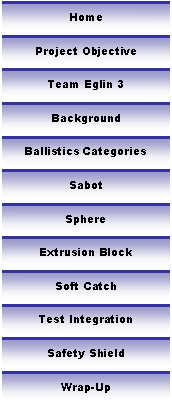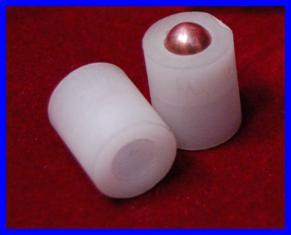
|
Sabot-Manufacturing |
|
The following section discusses the process used in manufacturing the sabot and problems encountered.
Process
The sabot was an important part of the first phase of the design. The sabot needed hold the projectile and fit inside the barrel. The barrel is that of a .50 caliber gun and a sample obturator from a previous experiment on the same barrel was measured to determine the clearance. From the beginning of the design process, the material for the construction of this part was known (polypropluex). The material is a very ductile plastic and cuts in long strands rather than chips. This did make machining a bit more difficult; however, the machining could be done quickly because the material is very soft. The part was made in a lathe using standard lathe tools, a ball drill bit, and a modified drill bit. The part could be easily turned down to the right outside dimension and the wide hole for the air pocket was made with a .45” drill bit that had the angle modified in order to be flatter at the base of the hole. The part was then faced off after the appropriate length and placed back in the lathe to clean up the “front” edge in order to put the hole to hold the sphere with the ball drill bit. The lathe work on the part is finished. A single, whole sabot is now manufactured .
Whole Completed Sabots
Problems
The next part of the manufacturing process was more of a difficulty that could lead to a problem during testing. At the final design stage, the team and customer decided that the sabot should be split along the length, creating two halves. This is because the sabot needs to separate so that is does not follow the sphere into the die. The separation will be discussed in the external ballistics since the it will occur in that section.
|





|
Copyright 2006-2007 Famu-Fsu College of Engineering . All Rights Reserved |